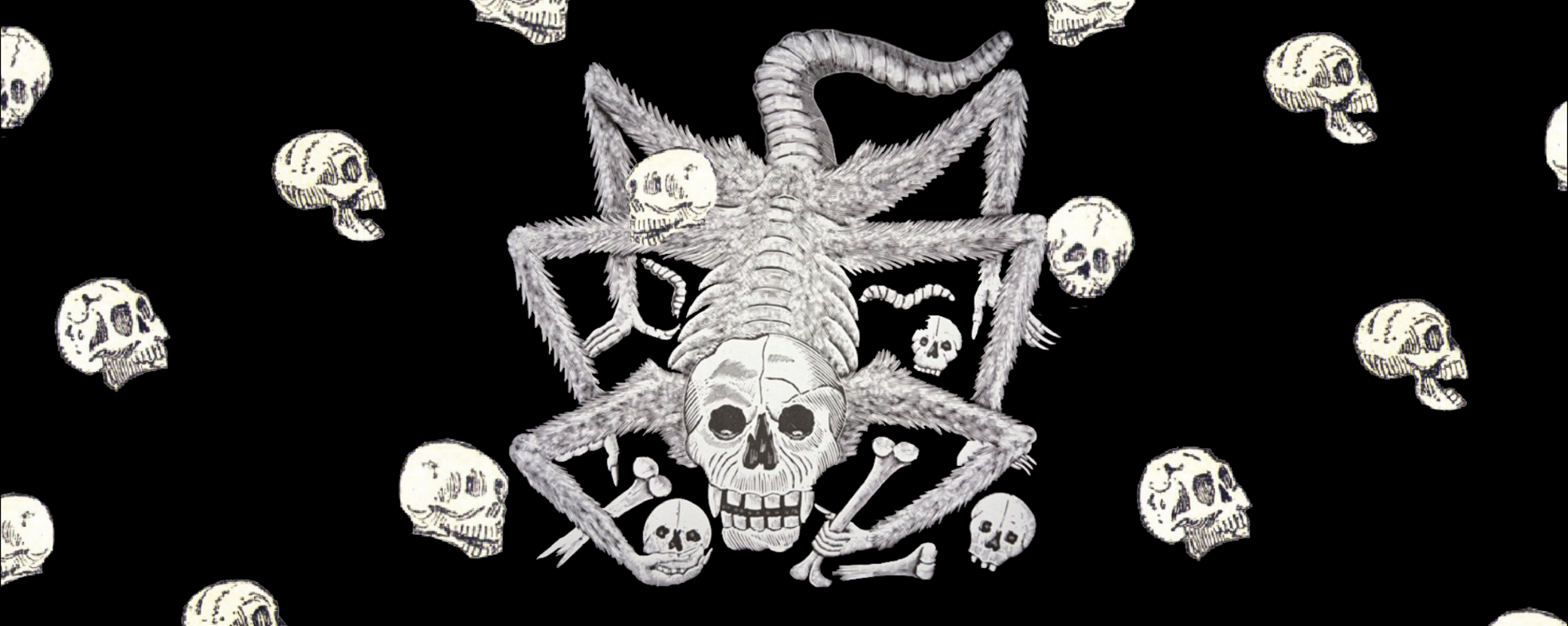
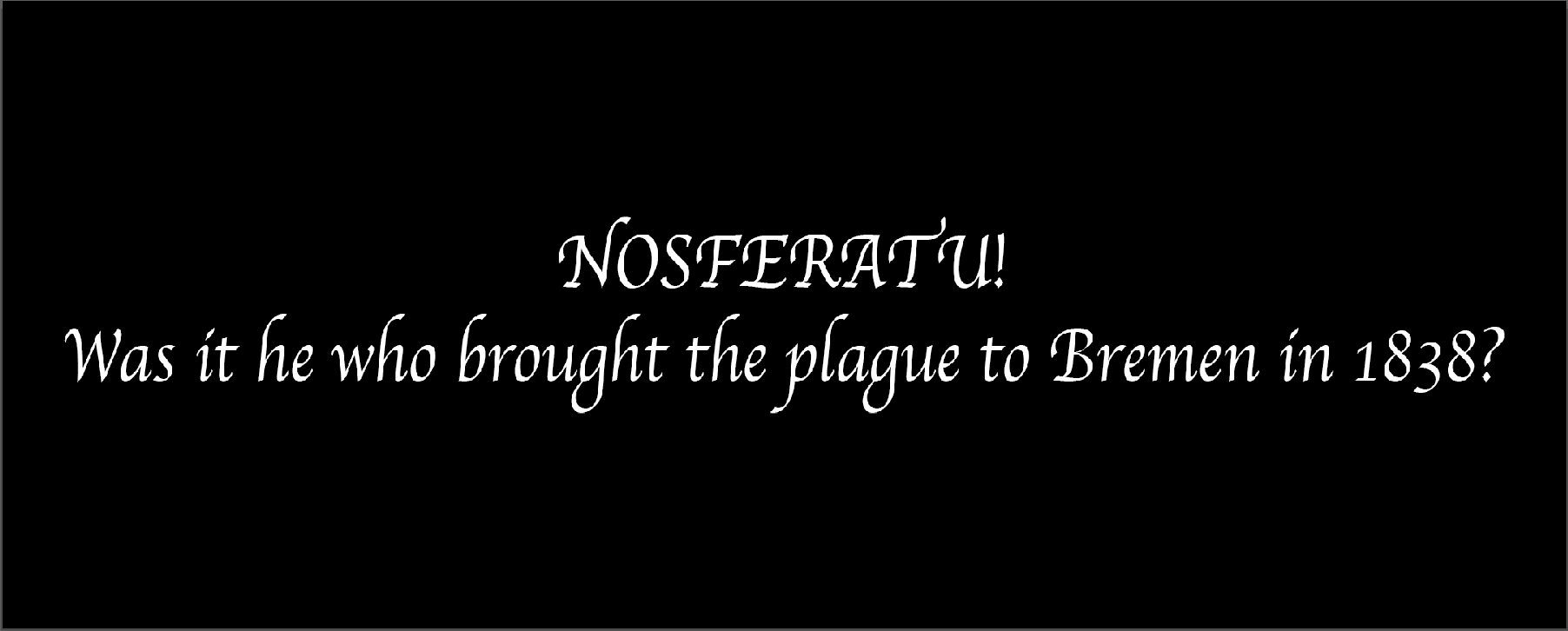
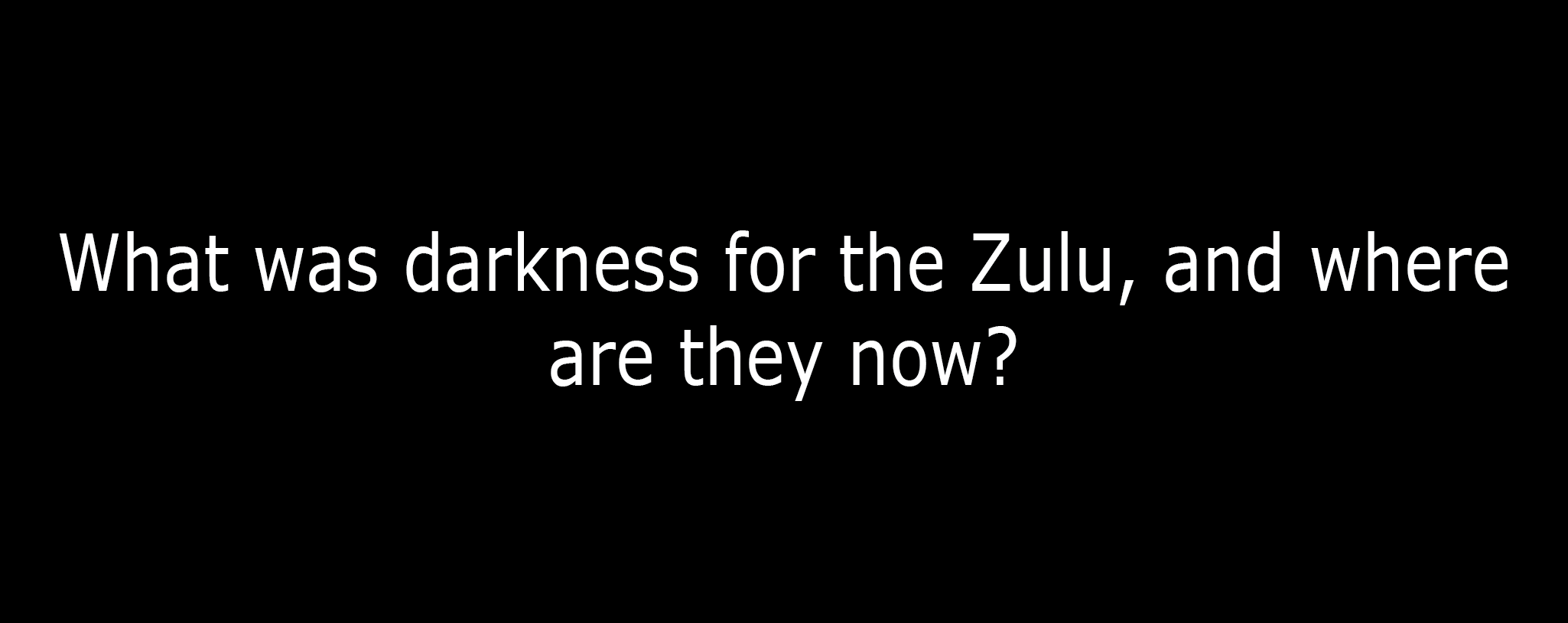
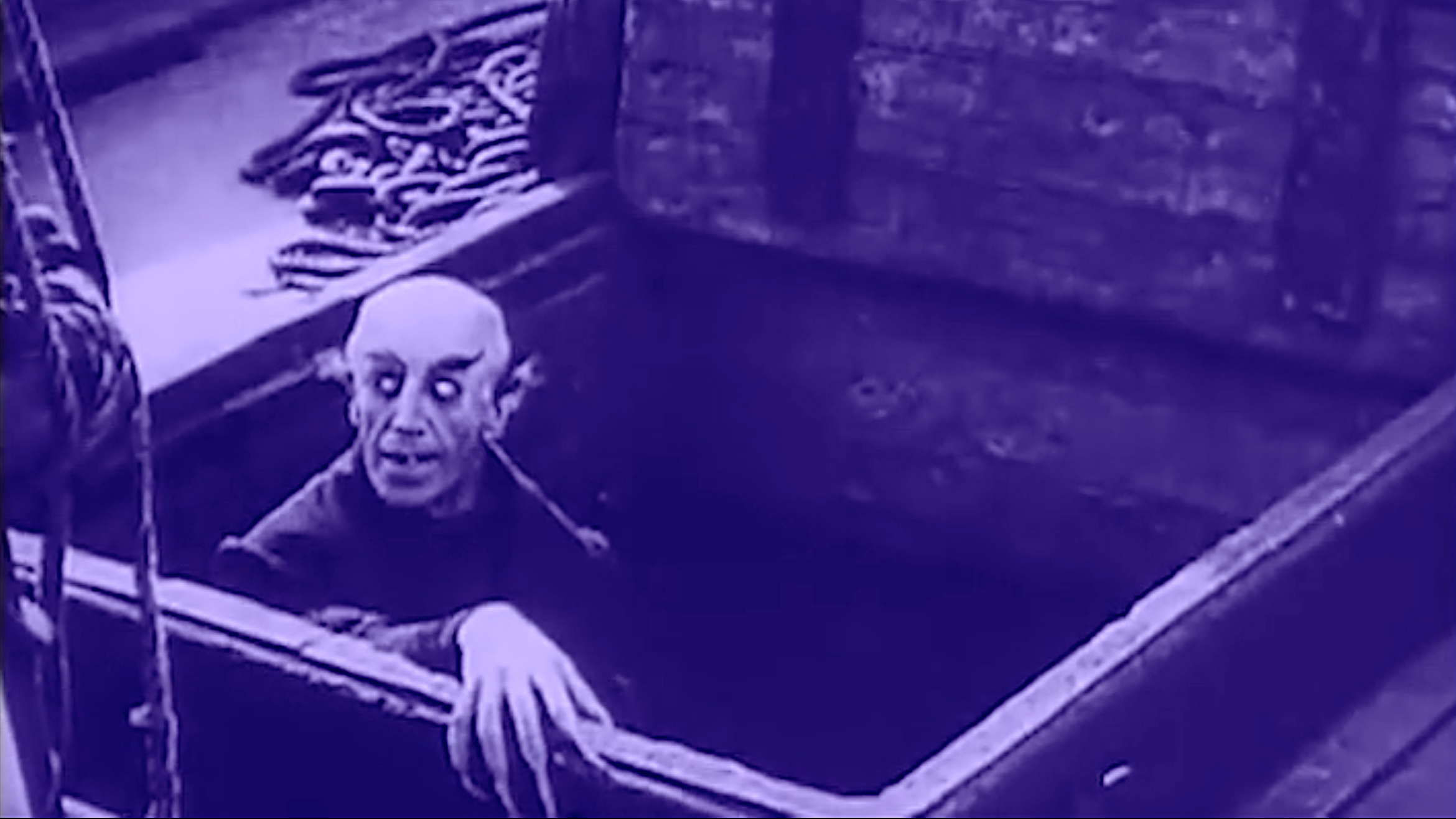
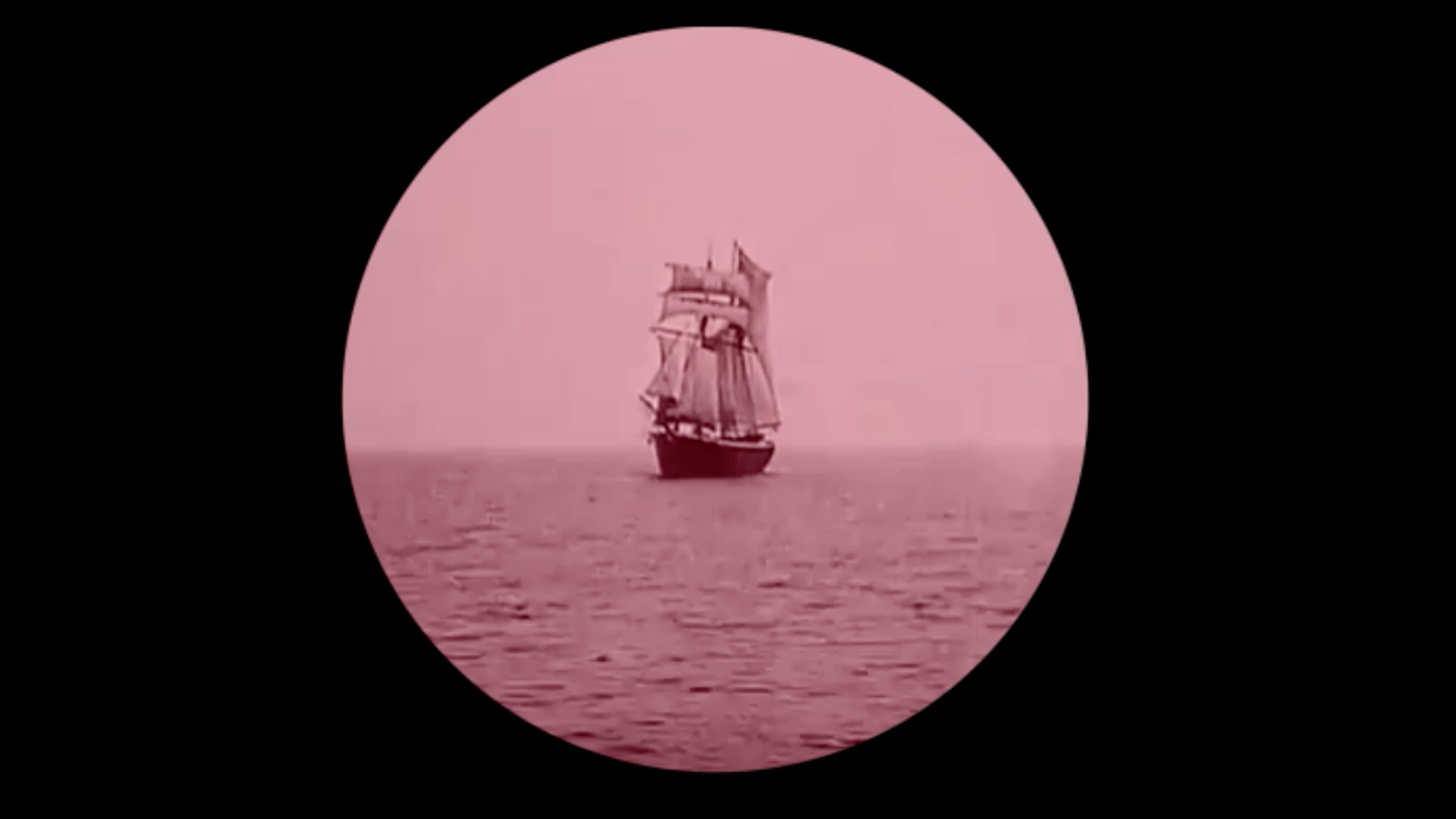

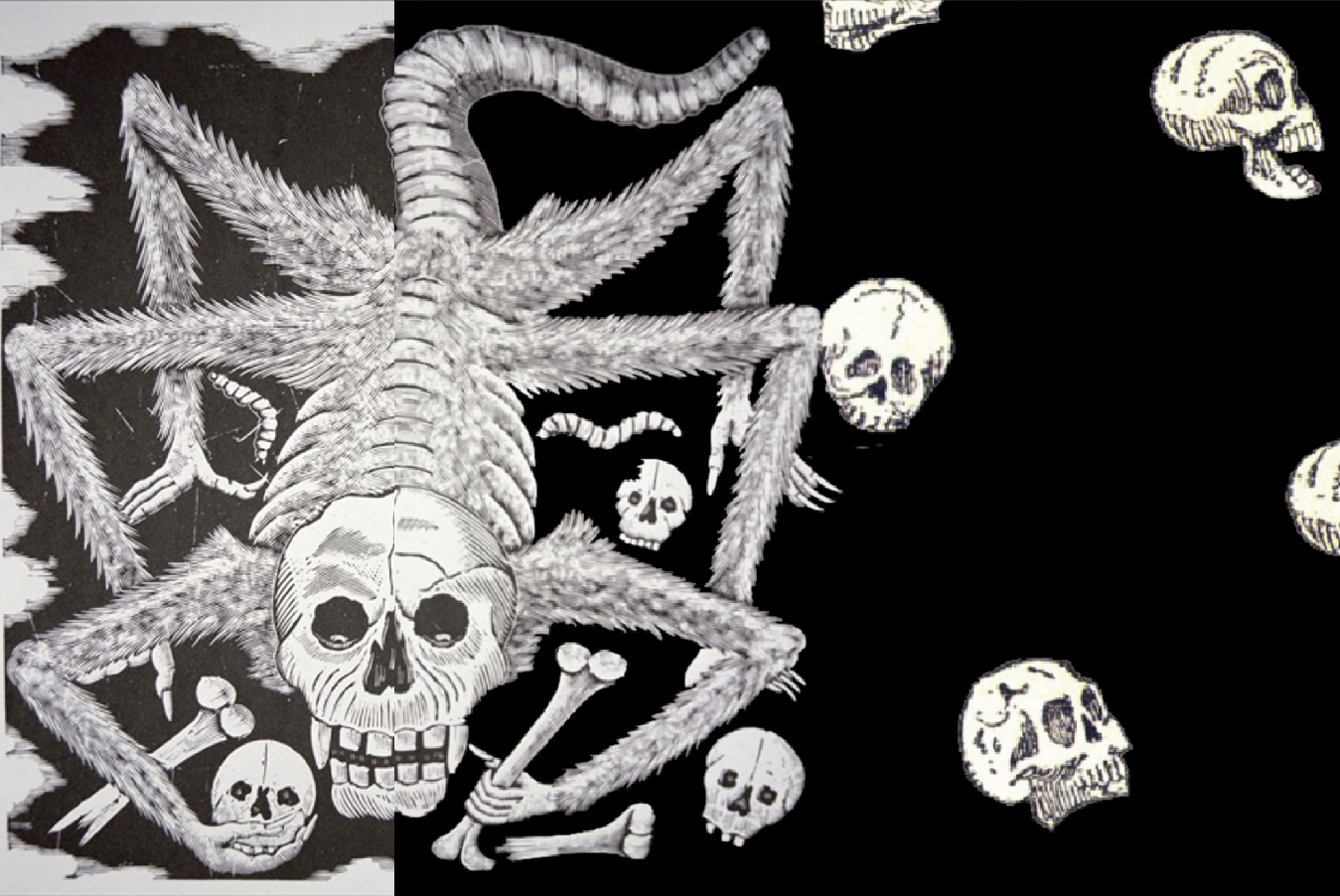

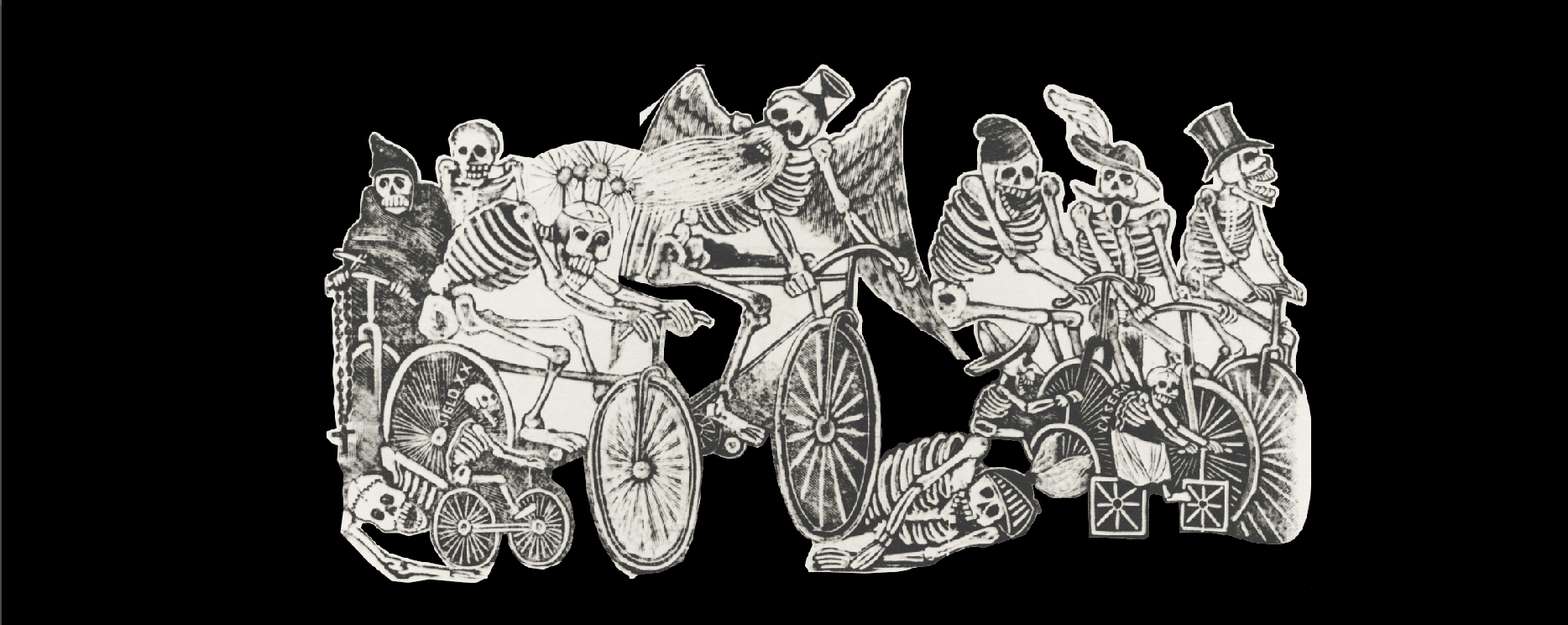

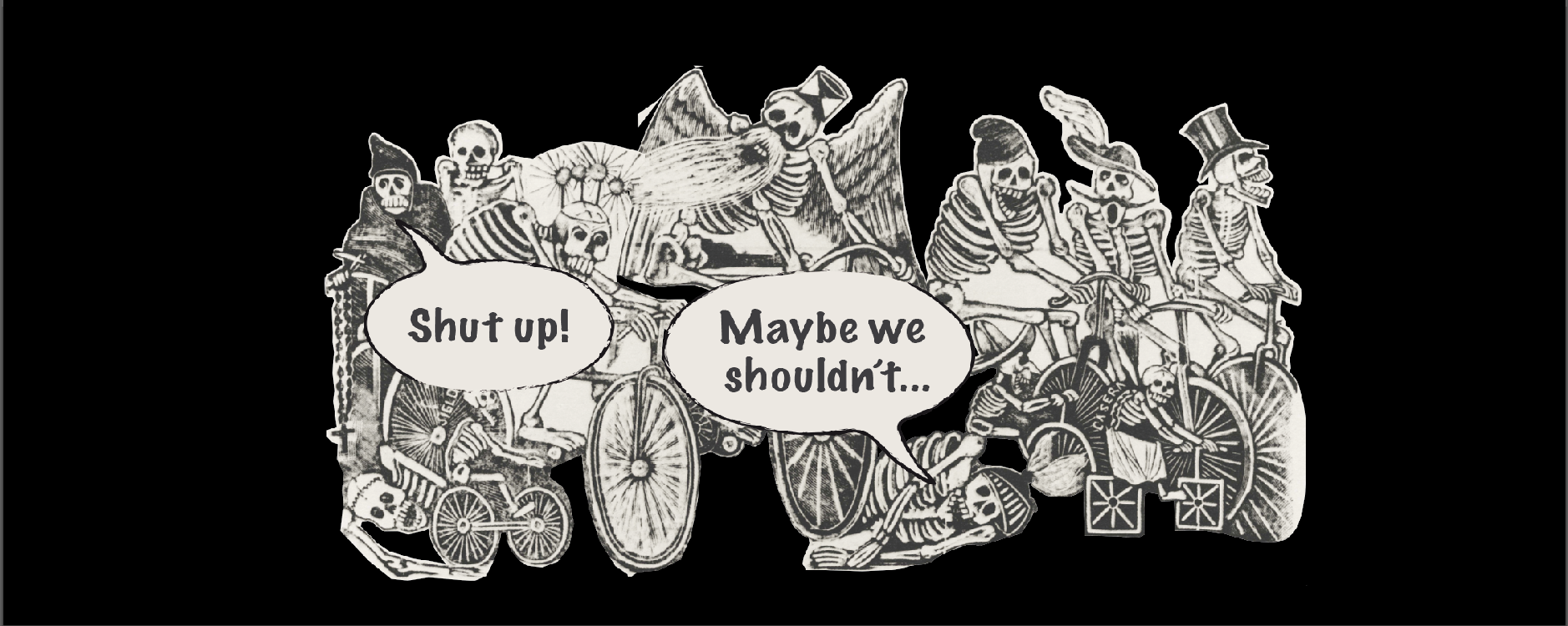
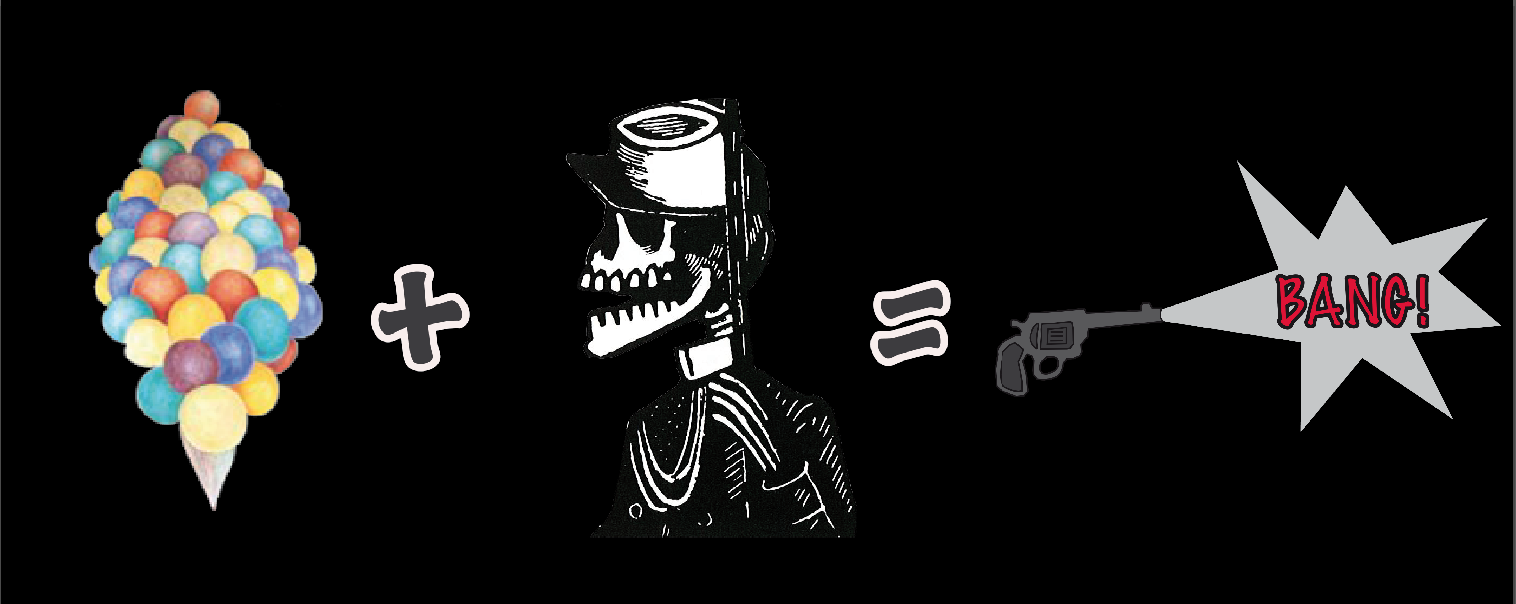
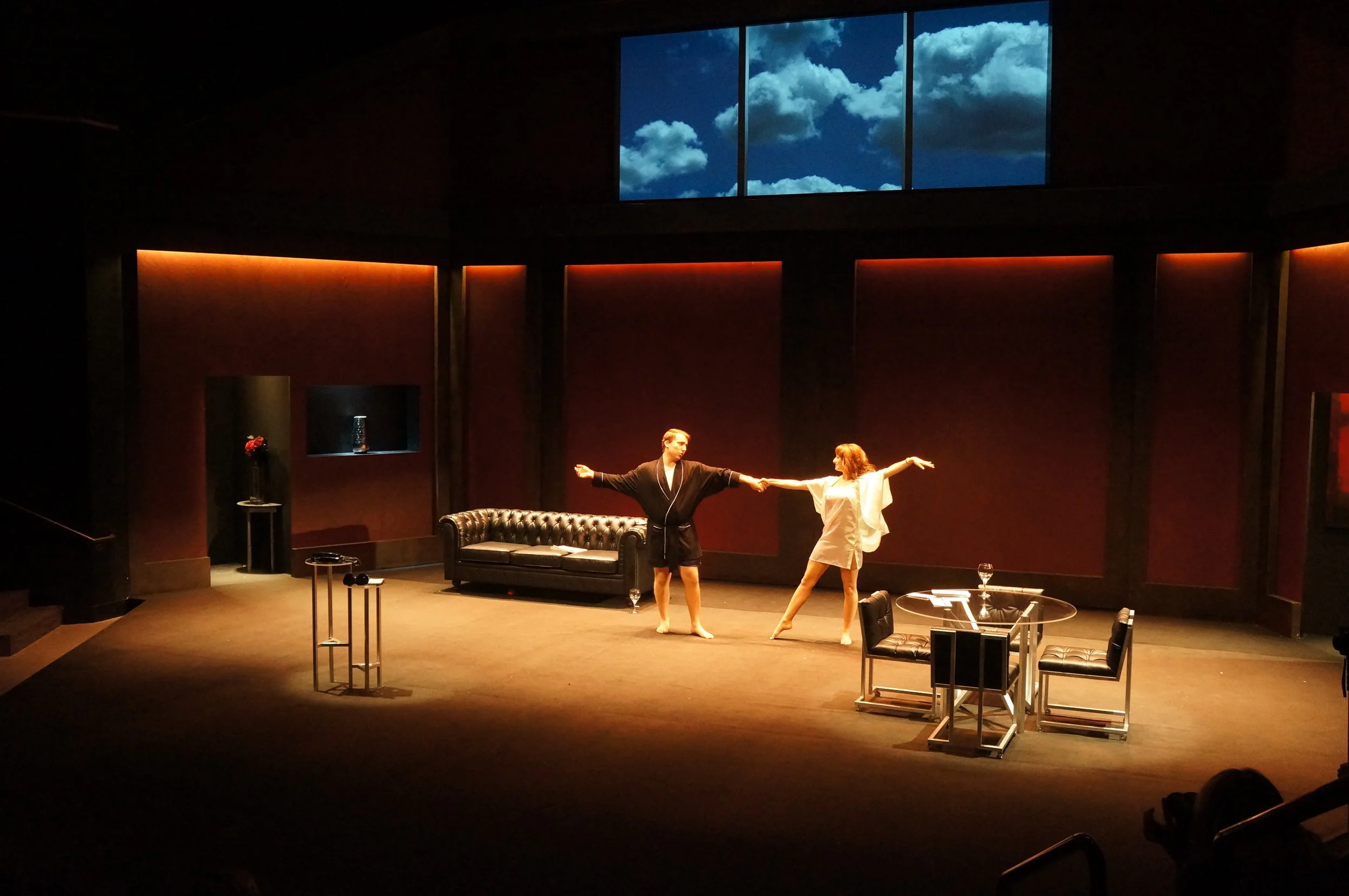
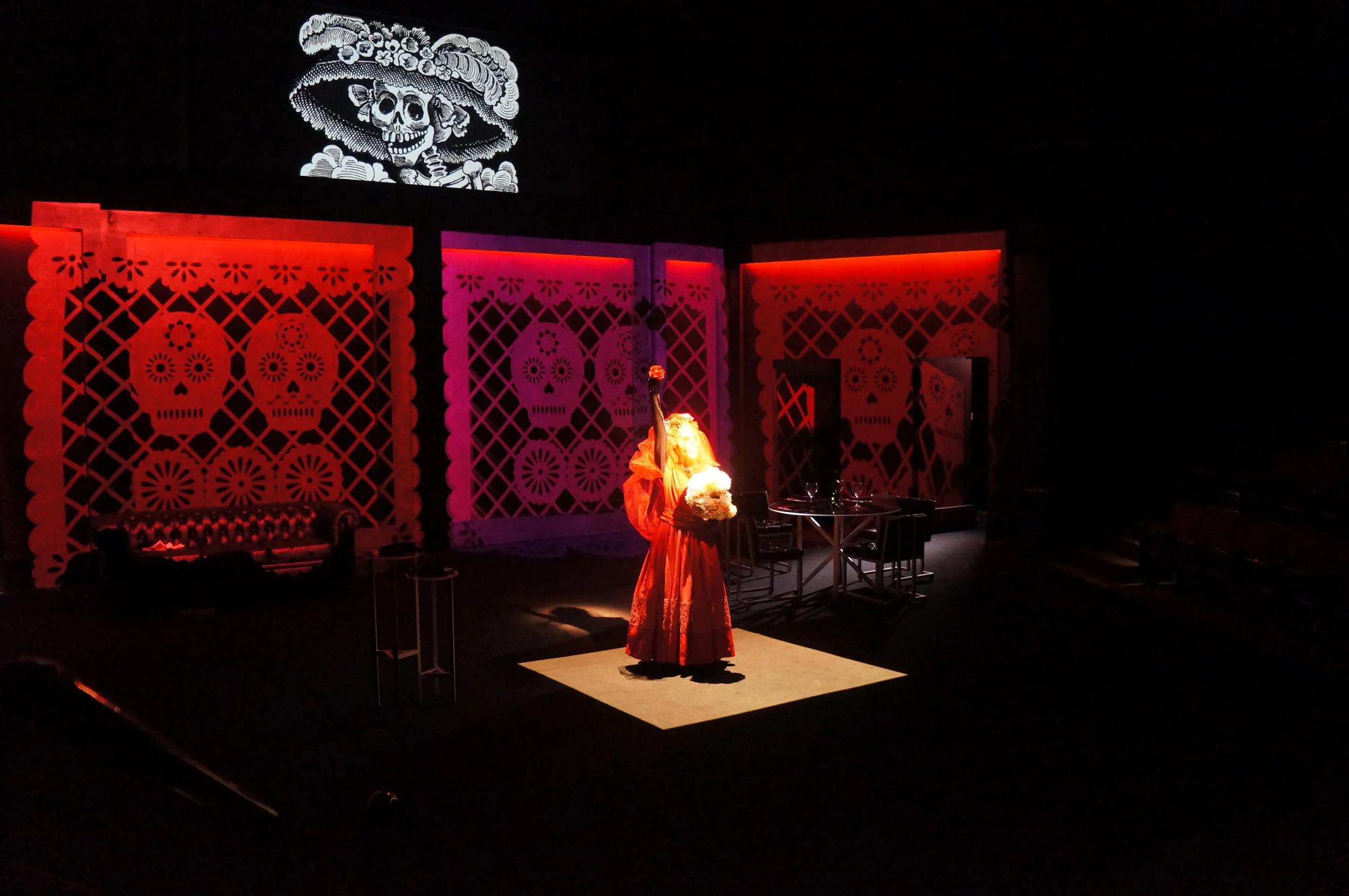
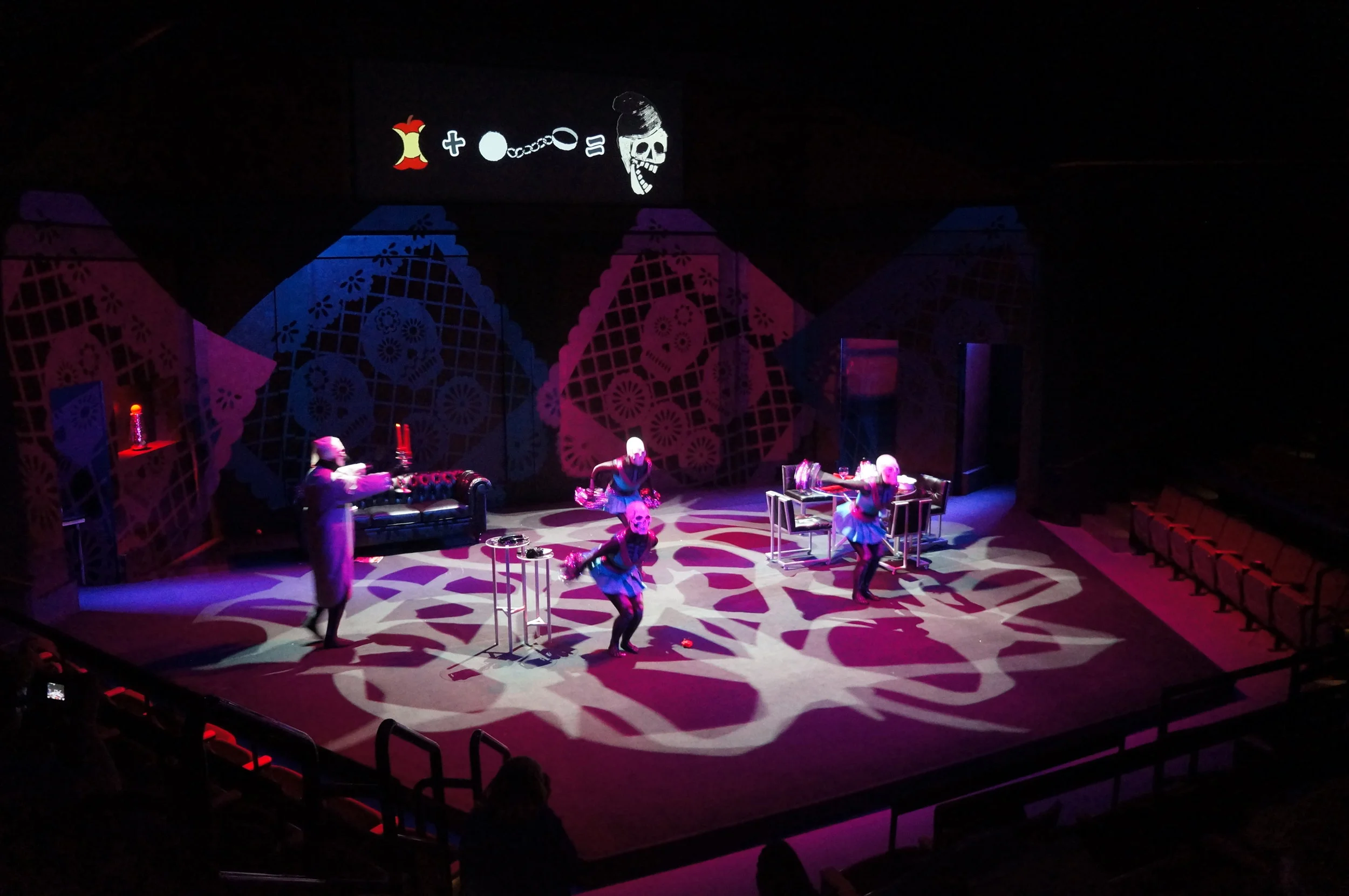

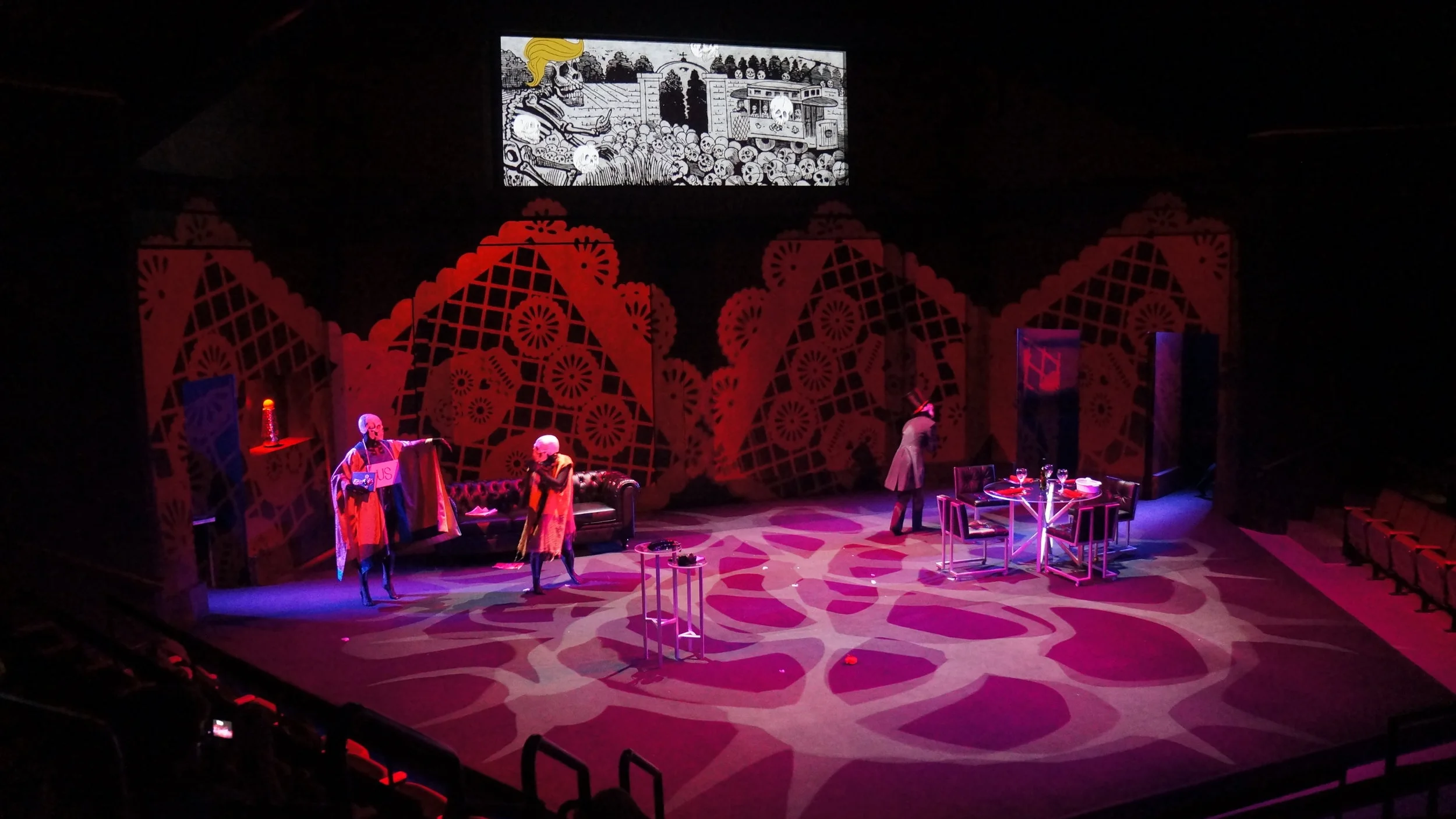
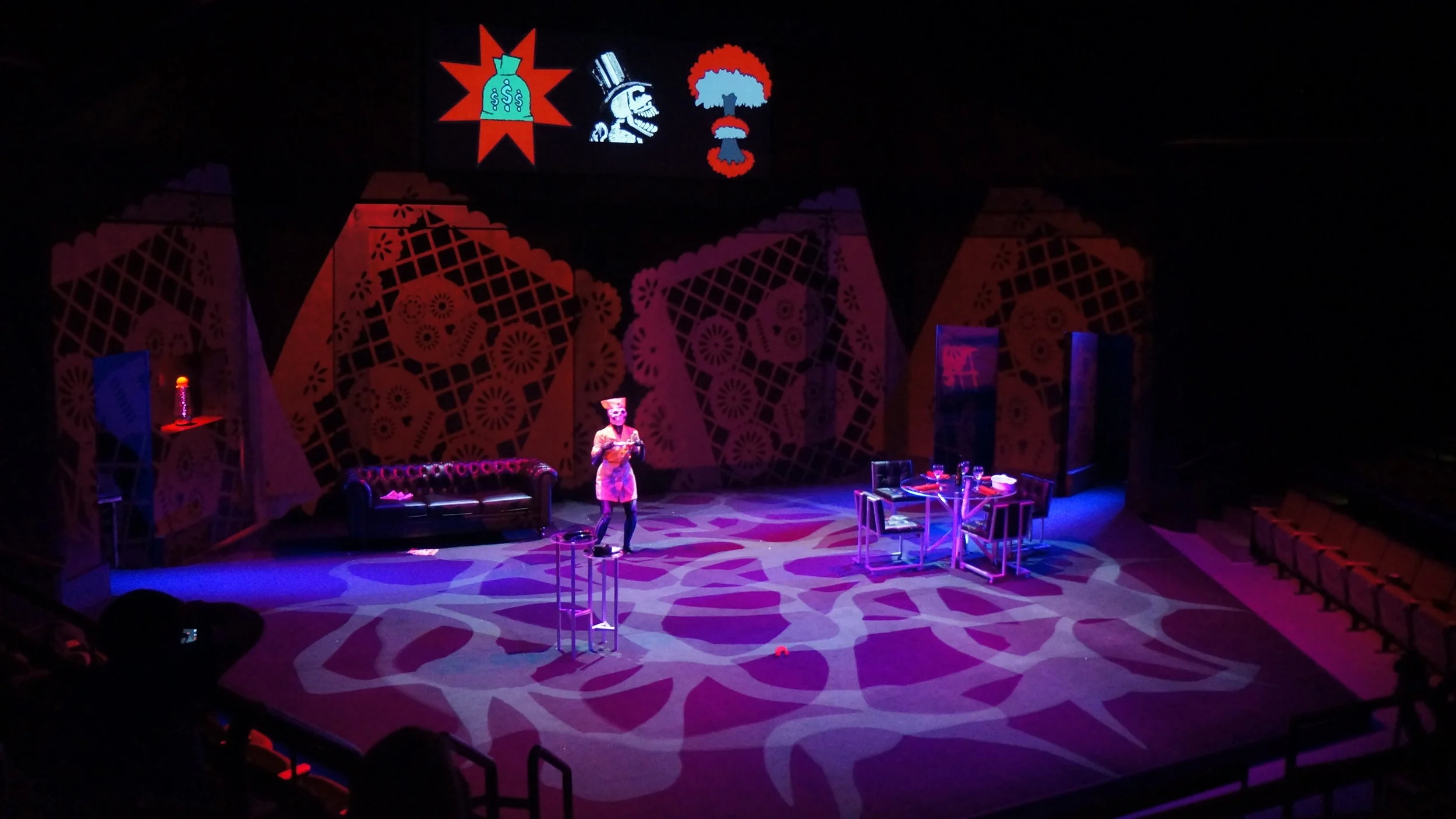
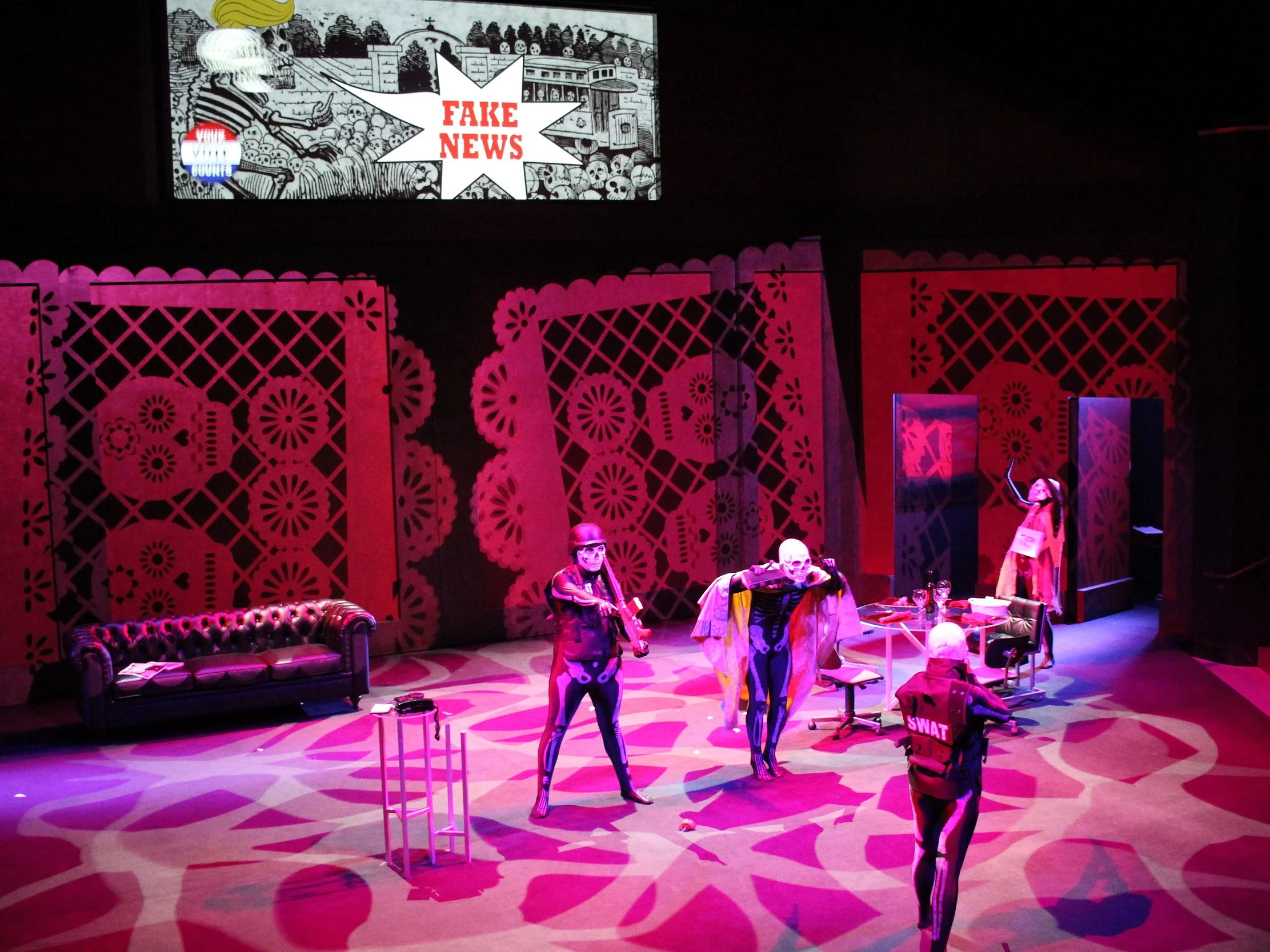


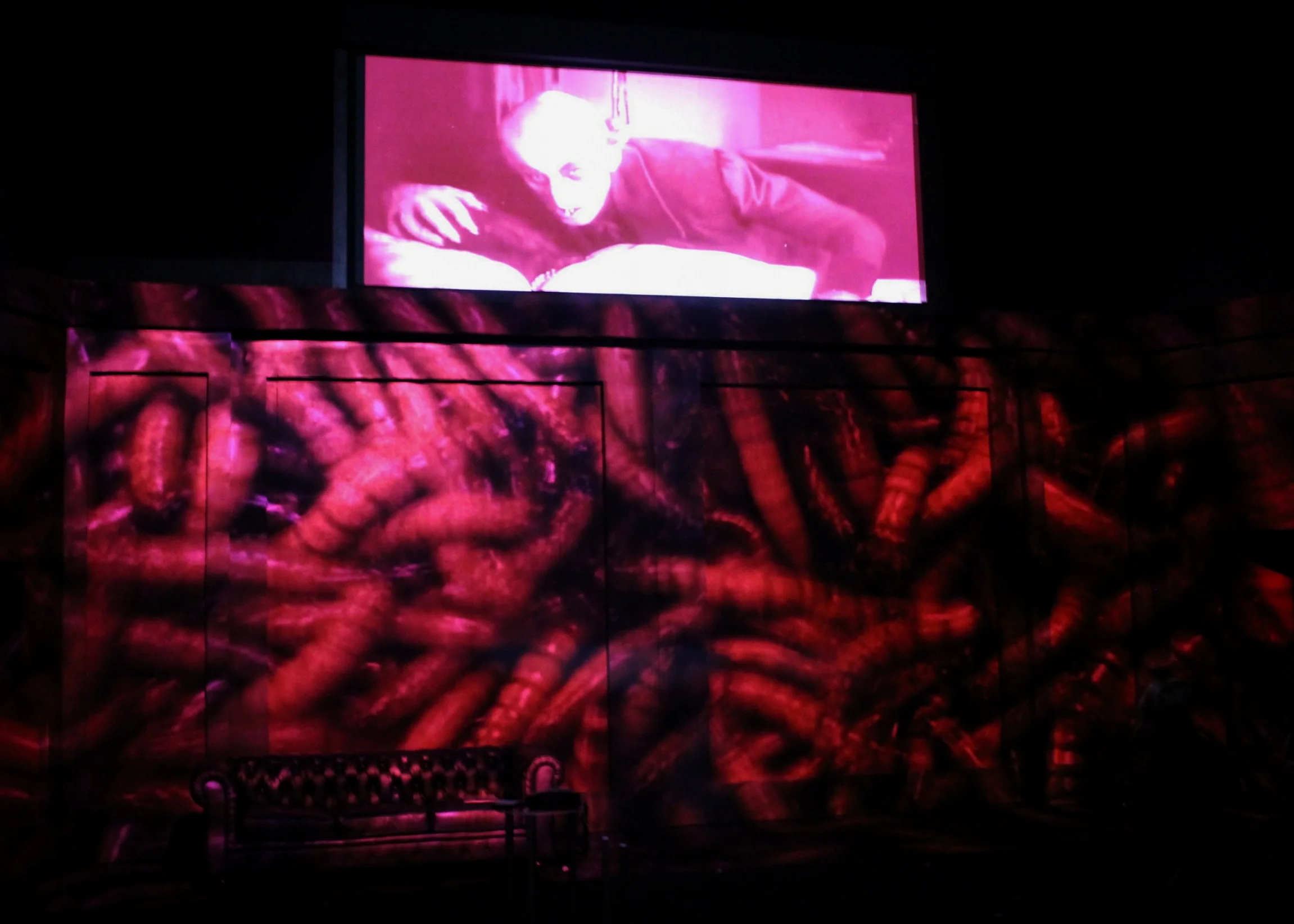


Assistant projections designer: Claire Jessie
For this incarnation of Ping Chong’s Nosferatu, projections ran with no blackouts on the screen in between scenes for the entire show, becoming an extension of both the set and the characters on stage. There were four different kinds of projections:
- Text slides (inspired by the silent movie genre).
- Video loops of moving clouds, night sky, and fireworks.
- Slow-mo excerpts from F.W. Murnau's Nosferatu film.
- Animations, for the Day of the Death parade.
A total of 62 text slides, 4 video loops, 6 excerpts, and more than 50 original cartoons and 60 cutouts where digitally created, edited and manipulated, in order to bring to our modern era a tale that, like count Orlok himself, doesn't grow old through time.
Cued and ran in Watchout 6.

With original text from the F.W. Murnau movie.
Digitally created with Adobe Illustrator and Photoshop.

With a more modern font style, this type of slides contained fragments from Ping's original text, and were read by a deep voice over.

Excerpt from F.W. Murnau's film "Nosferatu: A Symphony of Horror", 1929.
Video extraction and editing by Claire Jessie.
Cued and ran with Watchout 6.

Excerpt from F.W. Murnau's film "Nosferatu: A Symphony of Horror", 1929.
Video extraction and editing by Claire Jessie.
Cued and ran with Watchout 6.

Inspired by the ancient mexican tradition of Dia de los Muertos, Ping Chong's interpretation takes the aesthetic of this celebration and uses it to emphasize the rot behind today's society.
It is an almost poetical symmetry that more than 100 years before him, a man with a similar thought in mind created a series of satiric illustrations to denunciate the evils of the society of his time. Today, the art of José Guadalupe Posada is the foundation and inspiration to today's imagery and aesthetic of the modern mexican Day of the Death.
A conversation between these two artists of their times had already started, and a follow-up demanded to happen.
"La Catrina", 1910. Illustration by José Guadalupe Posada.

Posada's original illustrations (left) were re-imagined into our modern society's rot.
The animation process demanded an analysis of each individual illustration, in order to understand the original message Posada wrote in his visual language, and translating that message into the language of the surreal animated dynamism (right).
"Calavera Huertista", 1910. Illustration by José Guadalupe Posada.

For the animations to succeed, Posada's original material had to be deconstructed and recomposed into today's sociological issues.
"From this famous hippodrome on the racetrack, not even a single journalist is missing. Death is inexorable and doesn’t even respect those that you see here on bicycle", 1898-1902. Illustration by José Guadalupe Posada.

Original material digitally created in Adobe Illustrator and Photoshop.
Animated and run in Watchout 6.

Ping Chong requested that, within the animations, a series called the equations had to be created, fulfilling three conditions:
- Each animation should include at least one skull, and a catastrophic result.
- Each equation should address a contemporary social evil.
-Every part of the equation, from their appearance on screen, their permanence in it, all the way to their final exit should always be dynamic. Never still, and never the same.
Posada's illustrations, once again, featured this animated sequence, with the introduction of original cartoons that emphasize both their satiric quality, and their ironically tragic result.
All original cartoons (more than 50 individual elements), were created in Adobe Illustrator and Photoshop.
Animated and ran in Watchout 6.

The projections screen on the set, and it's frame were built-in physical elements on stage. But the middle bars that made the window were digitally created images that would enter and exit the screen fully animated.
The bars were drawn and colored in Adobe Illustrator, rendered in Photoshop, and animated in Watchout 6.
Photo by Alison Owen

In addition to the projections on screen, for the Day of the Death parade a mexican cut paper pattern would be projected on the lower bottom of the set.
The pattern would move, rotate, and change colors along the whole sequence.
Photo by Allison Owen

Before Nosferatu's crypt is revealed behind the walls, the set gets covered by projections of crawling worms, and on screen, the vampire's final bite.
Excerpt from F.W. Murnau's film "Nosferatu: A Symphony of Horror", 1929.
Video extraction and editing by Claire Jessie.
Cued and ran with Watchout 6.
Photo by Chris Russo